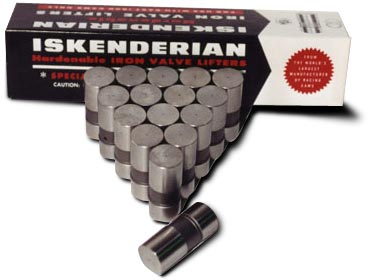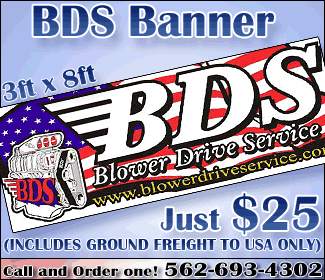|
<< PREVIOUS PAGE
A roller camshaft lifter and rocker arm have
a roller bearing at one end of the lifter to
help reduce friction, heat, wear, and drag in
the engine. Those components also aid the engine
to rpm quicker and higher than a solid or conventional
hydraulic lifter engine.
Roller cams are usually found in engines that
make power in the 8,000-11,000 rpm range. In
order for the camshaft to live at that rpm range,
the manufacturers had to develop valvetrain
components using stronger and more expensive
material. So "roller" camshafts were made from
a solid piece of billet steel instead of cast
material, roller bearing lifters were specially
engineered for improved durability, and valve
springs were made of expensive steel using expensive
methods.

So, you are asking, what does all of this have
to do with the subject of hydraulic roller cams
and bracket or Sportsman racing. Well, fellow
racers, here is the deal.
BENEFITS
- With some limitations, hydraulic roller
camshafts offer a racer many of the benefits
of a roller cam with almost none of the drawbacks.
Instead of a conventional roller lifter, they
use a hydraulic lifter with a roller bearing
on one end. True, the hydraulic lifters are
heavier than the conventional roller lifters,
but, generally speaking, once they've been
adjusted you can forget them.
- Hydraulic roller cams, because of the weight
of the lifter, generally rev up past 7,000-rpm
so springs, rocker arms and push rods don't
take much abuse or need much maintenance.
- Both the roller and hydraulic lifter cams
are turned from a piece of billet material
hydraulic rollers so both offer durability
- A hydraulic roller costs a bit less than
a regular roller.
So, you ask, will a hydraulic roller make the
horsepower and torque I need to run between
ADVERTISEMENT
 |
7.50
and 10.90? The cam people I talked to gave me
a qualified yes. In doing research for this
article, I talked to cam designers from Isky
Racing Cams, Competition Cams, and Crane Cams,
engine builder Jim Oddy, Stan Ray of Ohio Crankshaft,
and Scott Walker of ASW Race Engines.
The general opinion among all of them was that
for all but the most high horsepower requirements
a hydraulic roller cam was probably the best
compromise between a regular high performance
flat-tappet cam and a full-boogie, roller-lifter
cam. Everyone agreed that up to about 7,000
rpm the hydraulic roller cam will make approximately
the same horsepower and torque that a conventional
roller cam will in a like engine. The only apparent
drawback is that if your applications require
an engine that operates above 7,000 rpm you'll
have to take a pass on the hydraulic roller.
NEXT
PAGE >>
|